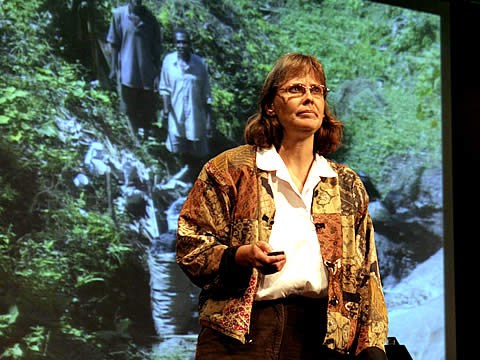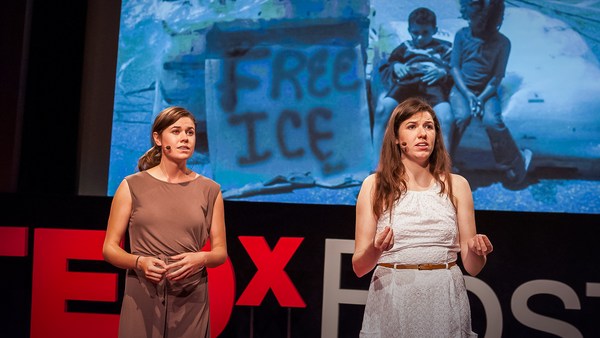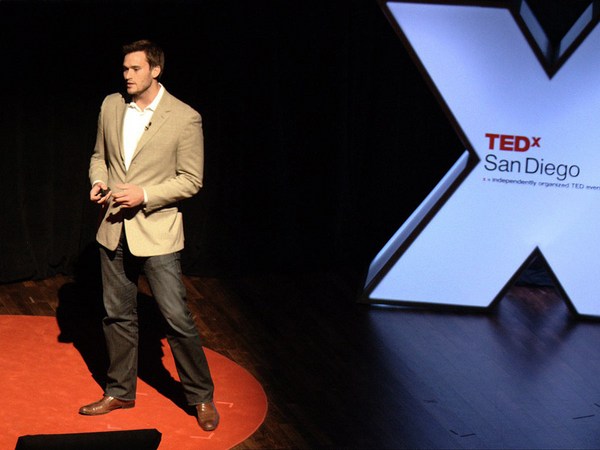I learned about the Haiti earthquake by Skype. My wife sent me a message, "Whoa, earthquake," and then disappeared for 25 minutes. It was 25 minutes of absolute terror that thousands of people across the U.S. felt. I was afraid of a tsunami; what I didn't realize was there was a greater terror in Haiti, and that was building collapse. We've all seen the photos of the collapsed buildings in Haiti. These are shots my wife took a couple days after the quake, while I was making my way through the D.R. into the country. This is the national palace -- the equivalent of the White House. This is the largest supermarket in the Caribbean at peak shopping time. This is a nurses' college -- there are 300 nurses studying. The general hospital right next door emerged largely unscathed. This is the Ministry of Economics and Finance.
We have all heard about the tremendous human loss in the earthquake in Haiti, but we haven't heard enough about why all those lives were lost. We haven't heard about why the buildings failed. After all, it was the buildings, not the earthquake, that killed 220,000 people, that injured 330,000, that displaced 1.3 million people, that cut off food and water and supplies for an entire nation. This is the largest metropolitan-area disaster in decades, and it was not a natural disaster -- it was a disaster of engineering.
AIDG has worked in Haiti since 2007, providing engineering and business support to small businesses. And after the quake, we started bringing in earthquake engineers to figure out why the buildings collapsed, to examine what was safe and what wasn't. Working with MINUSTAH, which is the U.N. mission in Haiti, with the Ministry of Public Works, with different NGOs, we inspected over 1,500 buildings. We inspected schools and private residencies. We inspected medical centers and food warehouses. We inspected government buildings.
This is the Ministry of Justice. Behind that door is the National Judicial Archives. The fellow in the door, Andre Filitrault -- who's the director of the Center for Interdisciplinary Earthquake Engineering Research at the University of Buffalo -- was examining it to see if it was safe to recover the archives. Andre told me, after seeing these buildings fail again and again in the same way, that there is no new research here. There is nothing here that we don't know. The failure points were the same: walls and slabs not tied properly into columns -- that's a roof slab hanging off the building -- cantilevered structures, or structures that were asymmetric, that shook violently and came down, poor building materials, not enough concrete, not enough compression in the blocks, rebar that was smooth, rebar that was exposed to the weather and had rusted away.
Now there's a solution to all these problems. And we know how to build properly. The proof of this came in Chile, almost a month later, when 8.8 magnitude earthquake hit Chile. That is 500 times the power of the 7.0 that hit Port-au-Prince -- 500 times the power, yet only under a thousand casualties. Adjusted for population density, that is less than one percent of the impact of the Haitian quake. What was the difference between Chile and Haiti? Seismic standards and confined masonry, where the building acts as a whole -- walls and columns and roofs and slabs tied together to support each other -- instead of breaking off into separate members and failing. If you look at this building in Chile, it's ripped in half, but it's not a pile of rubble. Chileans have been building with confined masonry for decades.
Right now, AIDG is working with KPFF Consulting Engineers, Architecture for Humanity, to bring more confined masonry training into Haiti. This is Xantus Daniel; he's a mason, just a general construction worker, not a foreman, who took one of our trainings. On his last job he was working with his boss, and they started pouring the columns wrong. He took his boss aside, and he showed him the materials on confined masonry. He showed him, "You know, we don't have to do this wrong. It won't cost us any more to do it the right way." And they redid that building. They tied the rebar right, they poured the columns right, and that building will be safe. And every building that they build going forward will be safe.
To make sure these buildings are safe, it's not going to take policy -- it's going to take reaching out to the masons on the ground and helping them learn the proper techniques. Now there are many groups doing this. And the fellow in the vest there, Craig Toten, he has pushed forward to get documentation out to all the groups that are doing this. Through Haiti Rewired, through Build Change, Architecture for Humanity, AIDG, there is the possibility to reach out to 30,000 -- 40,000 masons across the country and create a movement of proper building. If you reach out to the people on the ground in this collaborative way it's extremely affordable. For the billions spent on reconstruction, you can train masons for dollars on every house that they end up building over their lifetime.
Ultimately, there are two ways that you can rebuild Haiti; the way at the top is the way that Haiti's been building for decades. The way at the top is a poorly constructed building that will fail. The way at the bottom is a confined masonry building, where the walls are tied together, the building is symmetric, and it will stand up to an earthquake. For all the disaster, there is an opportunity here to build better houses for the next generation, so that when the next earthquake hits, it is a disaster -- but not a tragedy.
(Applause)





